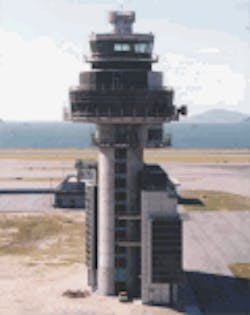Airlines skeptical of government's ability to move fast enough on NextGen to justify airline investment in future air traffic management system
CAMBRIDGE, Mass., 23 May 2010. U.S. commercial airlines are skeptical of the government’s ability to move fast enough on future air traffic control technology to justify any investments the airlines might make in the Next Generation Air Transportation System -- otherwise known as NextGen -- according to a report by the Ash Center for Democratic Governance and Innovation at the John F. Kennedy School of Government at Harvard University in Cambridge, Mass.
The question of who should pay for the nation's ground- and air-based air traffic management infrastructure is a major NextGen issue, and is challenging the long-established practice of government pays for infrastructure, airlines for planes, says the report, "Assuring the Transition to the Next Generation Air Transportation System," which synthesizes a meeting of than two dozen aviation industry leaders, senior government executives, and civilian researchers at the Ash Center last November.
NextGen relies heavily government and industry investment in technical infrastructure and data systems, new rules, procedures, and training, and as well as in significant operating changes, the report says. Investments in technologies, such as flight management systems, precision navigation systems, and data link capabilities in particular, are expensive and require collateral investments to realize their value.
The government could demonstrate its resolve and prove NextGen benefits with a new best-equipped, best-served strategy, but this would raise thorny issues of handling mixed equipage operations, altering flight paths, and changing procedures, the report points out.
NextGen is among the most significant efforts at cross-boundary transformation ever undertaken by the U.S. government and the aviation community. Success requires government and the airlines to work together on strategy, and that all understand the risks involved, the report says.
Although progress has been made to date, there is still distance to go, the report says. Government and the airlines may share a passion and commitment to the success of NextGen, yet disagree on how to get there.
Some argue for a new strong central authority to direct air traffic on NextGen to clarify and resolve governance issues internal to the Federal Aviation Administration (FAA), while others insist on a new networked governance path of governance might be considered, according to the report.
This means that rather than expecting top-down hierarchies to resolve and break through all the complexities of NextGen’s problems, that a group of interested participants should foster a network of networks to forge diverse, and even superior results.
To date, neither the government nor industry has yet shown full and joint commitment to pay for NextGen improvements. The report suggests that municipalities or regions might find a compelling business case for NextGen to their areas for jobs, economic development, and commerce. Similarly, local networks might manage the issues and risks of airport expansions, flight path changes, noise, and related matters.
A network five or six different regions might provide overall governance, standards, and models, and craft a wide range of potential solutions for NextGen design, development, and implementation, the report says.
The report captures the nearly two-day session and articulates five key elements for the continued success and transformation of America's national air space:
-- a governance strategy for NextGen that builds support and creative solutions throughout the network of travelers, pilots, air traffic controllers, local economic development authorities, and political leaders for NextGen investments;
-- leadership in politics, technology, financing, and governance so that the difficult issues are resolved and progress continues;
-- operational incentives that accelerate the adoption of new technology and procedures, assuring that the beneficiaries of NextGen realize measurable outcomes;
-- the development of innovative financing solutions that take stock not only of the nation's financial condition, but also the great public benefits of NextGen with returns to reduced delays, cleaner air, and competitive advantage for the nation in global trade; and
-- risk management that addresses the major issues that have plagued such complex undertakings so that "predictable surprises" can be averted.
The summary report captures the two-day session and was co-authored by Stephen Goldsmith, Fred Messina, and Zachary Tumin. A copy of the report is online at www.ash.harvard.edu.
About the Author
John Keller
Editor-in-Chief
John Keller is the Editor-in-Chief, Military & Aerospace Electronics Magazine--provides extensive coverage and analysis of enabling electronics and optoelectronic technologies in military, space and commercial aviation applications. John has been a member of the Military & Aerospace Electronics staff since 1989 and chief editor since 1995.
